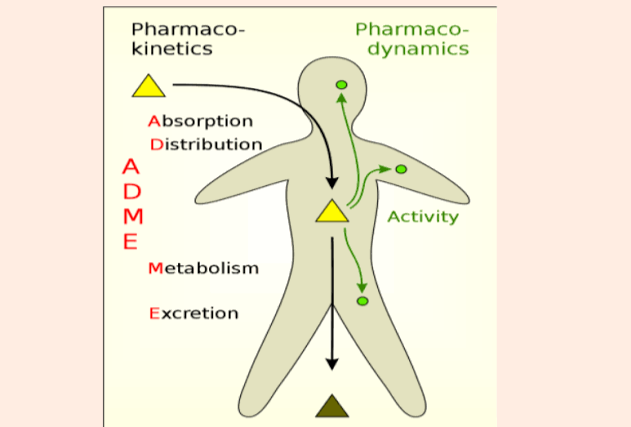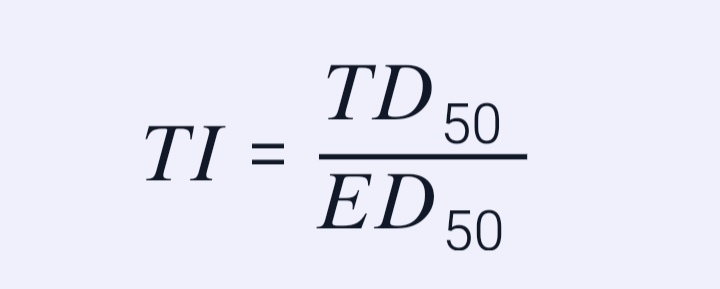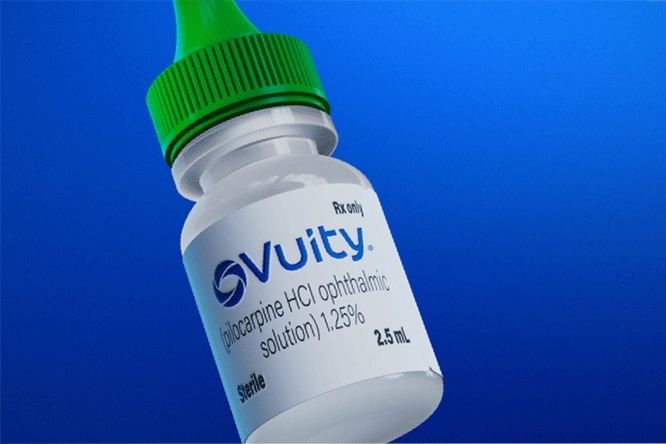
Understanding Pharmacodynamics
Pharmacodynamics is a critical area of pharmacology that focuses on the effects of drugs on biological systems. It encompasses the study of how drugs interact with receptors, enzymes, and other cellular targets to elicit therapeutic effects or adverse reactions. The understanding of pharmacodynamics is essential for drug development, as it informs researchers about the mechanisms by which drugs exert their effects and helps predict their clinical efficacy and safety.
Key Concepts in Pharmacodynamics
- Drug-Receptor Interaction: At the core of pharmacodynamics is the interaction between drugs and their specific receptors. Drugs can act as agonists, which activate receptors to produce a biological response, or antagonists, which block receptor activation and inhibit responses. This interaction determines the therapeutic effect of a drug.
- Dose-Response Relationship: Pharmacodynamics examines how changes in drug dosage affect the magnitude of the drug’s effect. This relationship is often represented graphically in dose-response curves, which illustrate how increasing doses lead to increased effects up to a certain point (the maximum effect). Understanding this relationship helps determine effective doses, maximum tolerated doses, and toxic doses.
- Drug Efficacy vs. Potency: Efficacy refers to the maximum effect that a drug can achieve when it binds to its target, while potency describes the amount of drug needed to produce a specific effect. A highly potent drug requires a lower dose to achieve its effects compared to a less potent one; however, high potency does not necessarily mean high efficacy.
- Selectivity: Drug selectivity refers to a drug’s ability to affect specific tissues or organ systems while minimizing effects on others. High selectivity is desirable as it reduces potential side effects and enhances therapeutic outcomes.
- Pharmacological Effects: These are the observed therapeutic or adverse effects resulting from drug administration. They can be acute (short-term) or chronic (long-term) and vary based on individual patient factors such as genetics, age, sex, and overall health.
- Clinical Implications: Knowledge gained from pharmacodynamic studies is crucial for predicting how drugs will behave in real-world clinical settings. It guides healthcare professionals in making informed decisions about prescribing medications based on their expected benefits and risks.
In summary, pharmacodynamics provides vital insights into how drugs work within the body, influencing everything from initial research and development through clinical application and patient care.
Definition of Cell Receptor
A cell receptor is a specialized protein molecule located either on the surface of a cell or within the cytoplasm that binds to specific ligands, such as hormones, neurotransmitters, or other signaling molecules. This binding initiates a series of cellular responses that can affect various physiological processes.
Types of Cell Receptors
There are two primary types of cell receptors: internal receptors and cell surface receptors.
- Internal Receptors: Also known as intracellular or cytoplasmic receptors, these are found within the cytoplasm of the cell. They typically respond to hydrophobic ligands that can easily cross the plasma membrane. Once inside the cell, these ligands bind to their respective internal receptors, leading to conformational changes that expose DNA-binding sites on the receptor proteins. This ligand-receptor complex then translocates into the nucleus where it binds to specific regulatory regions of chromosomal DNA, promoting gene expression and influencing cellular function.
- Cell Surface Receptors: These receptors are embedded in the plasma membrane and interact with external ligands. When a ligand binds to a cell surface receptor, it triggers a conformational change in the receptor that transmits signals across the membrane into the cytoplasm. This process often involves secondary messengers and can activate various intracellular signaling pathways leading to cellular responses such as growth, differentiation, or metabolism.
Mechanism of Action
The action of cell receptors is crucial for maintaining homeostasis and facilitating communication between cells and their environment. Upon ligand binding:
- For internal receptors, gene expression is directly influenced by altering transcription processes.
- For cell surface receptors, signal transduction pathways are activated which may involve cascades of biochemical reactions mediated by enzymes or secondary messengers.
This intricate signaling mechanism allows cells to respond appropriately to changes in their environment and maintain proper physiological functions.
In summary, a cell receptor is a protein molecule that binds specific ligands to initiate cellular responses, playing essential roles in communication and regulation within biological systems.
The Concept of Receptor Occupancy
Receptor occupancy (RO) refers to the measurement of how many receptors on a cell surface are bound by a therapeutic agent, typically a drug or biologic, such as monoclonal antibodies. This concept is crucial in pharmacology and biotherapeutics because it helps determine the efficacy and safety of drugs that target specific receptors involved in various biological processes.
Importance of Receptor Occupancy
- Mechanism of Action (MOA): Understanding receptor occupancy is essential for elucidating the mechanism of action of therapeutic agents. By quantifying how effectively a drug binds to its target receptor, researchers can infer how well the drug will exert its intended effects within the body.
- Efficacy Assessment: The level of receptor occupancy can directly correlate with the therapeutic effect. Higher occupancy rates often lead to more significant biological responses, making it vital to establish optimal dosing regimens for achieving desired outcomes without causing adverse effects.
- Safety Concerns: Monitoring receptor occupancy also aids in identifying potential safety issues. If a drug binds excessively to its target or interacts with unintended receptors, this could lead to side effects or toxicity. Thus, understanding RO helps in risk assessment during drug development.
Methods for Measuring Receptor Occupancy
Several methodologies exist for measuring receptor occupancy, with flow cytometry-based assays being among the most common due to their rapid and customizable nature:
- Flow Cytometry Assays: These assays allow for real-time analysis of cell populations and can be tailored to specific cell types and therapeutic molecules. They measure how many receptors are occupied by a drug compared to those that remain unoccupied.
- Free Receptor Assay: This type measures the concentration of free (unbound) receptors available on the cell surface after treatment with a therapeutic agent, providing insights into binding dynamics.
- Other Assay Designs: Various other assay formats exist depending on the specific requirements of the study, including competitive binding assays and equilibrium binding studies.
Applications in Drug Development
As biotherapeutic development continues to grow—accounting for over 70% of Investigational New Drug (IND) filings—receptor occupancy assessments have become increasingly important. The rise in precision medicine emphasizes targeted therapies that require detailed understanding not only of how drugs interact with their targets but also how these interactions translate into clinical efficacy and safety profiles.
In summary, receptor occupancy is a fundamental concept in pharmacology that provides critical insights into drug action, efficacy, and safety through precise measurement techniques tailored for specific therapeutic contexts.
Examples of Different Cell Receptors
Cell receptors are specialized proteins located on the surface of cells or within cells that bind to specific substances, such as hormones, neurotransmitters, and drugs. This binding triggers a response in the cell, influencing various physiological processes. Here are some examples of different types of cell receptors:
1. G-Protein Coupled Receptors (GPCRs)
These are a large family of receptors that play a crucial role in transmitting signals from outside the cell to the inside. When a ligand binds to a GPCR, it activates an associated G-protein, which then initiates a cascade of intracellular events. Examples include:
- Beta-adrenergic receptors: These receptors respond to adrenaline and noradrenaline and are involved in the fight-or-flight response.
- Dopamine receptors: These receptors bind dopamine and are important in regulating mood, reward, and motor control.
2. Receptor Tyrosine Kinases (RTKs)
RTKs are a class of cell surface receptors that have intrinsic kinase activity. Upon ligand binding, they undergo dimerization and autophosphorylation, leading to activation of downstream signaling pathways. Examples include:
- Insulin receptor: This receptor binds insulin and plays a key role in glucose metabolism.
- Epidermal growth factor receptor (EGFR): This receptor is involved in cell growth and differentiation; its dysregulation is often implicated in cancer.
3. Ion Channel Receptors
These receptors form channels that allow ions to flow across the cell membrane when activated by ligands. They play essential roles in neurotransmission and muscle contraction. Examples include:
- Nicotinic acetylcholine receptors: These ionotropic receptors mediate synaptic transmission at neuromuscular junctions.
- GABA_A receptors: These receptors bind gamma-aminobutyric acid (GABA) and are critical for inhibitory neurotransmission in the brain.
4. Nuclear Receptors
Nuclear receptors are found within cells and act as transcription factors upon binding their ligands, which typically include steroid hormones and thyroid hormones. Examples include:
- Glucocorticoid receptor: This receptor binds cortisol and regulates genes involved in metabolism and immune responses.
- Estrogen receptor: This receptor mediates the effects of estrogen on reproductive tissues and other systems.
5. Toll-like Receptors (TLRs)
TLRs are part of the innate immune system and recognize pathogen-associated molecular patterns (PAMPs). They play a vital role in initiating immune responses. Examples include:
- TLR4: Recognizes lipopolysaccharides from bacterial membranes.
- TLR3: Binds double-stranded RNA, indicating viral infection.
These examples illustrate the diversity of cell receptors and their critical roles in various biological processes.
How Drugs Affect the Body
1. Introduction to Drug Effects
Drugs can have a wide range of effects on the body, which depend on various factors including the type of drug, dosage, method of administration, and individual characteristics such as age, gender, and overall health. Understanding how drugs affect the body involves examining their pharmacokinetics (how the body processes drugs) and pharmacodynamics (how drugs affect the body).
2. Pharmacokinetics: The Four Stages of Drug Processing
The body processes drugs through four main stages:
- Absorption: This is the process by which a drug enters the bloodstream. The speed at which this occurs depends on how the drug is taken (e.g., orally, intravenously). For instance, intravenous drugs enter the bloodstream almost immediately, while oral medications may take longer due to digestion.
- Distribution: Once in the bloodstream, drugs are distributed throughout the body to various organs and tissues. This distribution is influenced by factors such as blood flow to different areas of the body and whether a drug can cross cell membranes.
- Metabolism: The liver primarily metabolizes drugs, breaking them down into simpler molecules called metabolites. This process can alter the effects of the drug; some metabolites may be active and produce effects similar to or different from those of the original substance.
- Excretion: Finally, metabolized drugs are eliminated from the body through urine or feces. The efficiency of this process varies based on individual metabolism and health conditions.
3. Pharmacodynamics: How Drugs Affect Body Functions
Drugs interact with specific receptors in the brain and other parts of the body to produce their effects:
- Stimulants: These drugs increase alertness and energy levels by enhancing neurotransmitter activity (e.g., dopamine). Common stimulants include caffeine and amphetamines.
- Depressants: These substances slow down brain activity and can induce relaxation or sedation. Alcohol and benzodiazepines are examples that affect neurotransmitters like gamma-aminobutyric acid (GABA).
- Hallucinogens: Drugs like LSD alter perception and can cause hallucinations by affecting serotonin receptors in the brain.
- Opioids: These substances bind to opioid receptors in the brain to relieve pain but can also produce feelings of euphoria. They have a high potential for addiction.
4. Short-Term vs Long-Term Effects
The effects of drugs can be categorized into short-term and long-term consequences:
- Short-Term Effects: These vary widely depending on the drug but may include changes in mood, perception alterations, increased heart rate, or impaired coordination.
- Long-Term Effects: Prolonged use can lead to significant health issues such as addiction, organ damage (especially liver or kidney), mental health disorders (like anxiety or depression), and social consequences (such as strained relationships or legal issues).
5. Conclusion
Understanding how drugs affect the body is crucial for recognizing their potential risks and benefits. Each drug has unique properties that influence its impact on physical health, mental well-being, social interactions, and overall life quality.
Introduction to Dose-Response Relationships
Drug dose-response relationships are fundamental concepts in pharmacology that describe how the effects of a drug change with varying doses. These relationships help determine the appropriate dosages for therapeutic effects while minimizing adverse effects. The principle underlying these relationships is often summarized by the adage, “The dose makes the poison,” which indicates that both insufficient and excessive doses can lead to ineffective or harmful outcomes.
Key Components of Dose-Response Relationships
- Dose: This refers to the amount of a drug administered. It can be expressed in various units such as milligrams (mg) or micrograms (µg). The dose is crucial because it influences the intensity and duration of a drug’s effect.
- Response: This is the biological effect observed after administering a drug, which can range from measurable physiological changes to subjective experiences reported by patients.
- Dose-Response Curve: This graphical representation plots the dose of a drug against its corresponding response. The shape of this curve provides insights into the drug’s potency and efficacy:
- Efficacy refers to the maximum effect achievable by a drug, represented by the plateau of the curve.
- Potency indicates how much of a drug is needed to produce a specific effect, often quantified using parameters such as EC50 (the concentration at which 50% of the maximum effect is observed).
- Parameters of Dose-Response Curves:
- EC50: This parameter represents the effective concentration at which 50% of the maximum response is achieved. A lower EC50 value indicates higher potency.
- nH (Hill coefficient): This reflects the steepness of the curve, indicating how sensitive the response is to changes in dose.
- ymax: This denotes the maximum response achievable by the drug.
Types of Dose-Response Relationships
- Graded Dose-Response Relationship: This type describes how increasing doses lead to progressively greater responses in an individual organism. It typically follows a sigmoidal curve where small increases in dose initially yield minimal responses, followed by rapid increases until reaching a plateau.
- Quantal Dose-Response Relationship: In contrast, this relationship assesses responses across populations rather than individuals, focusing on whether or not a certain percentage of subjects exhibit a defined response (e.g., relief from symptoms). The data often results in an S-shaped curve when plotted.
Applications in Pharmacology and Drug Development
Understanding dose-response relationships is critical for several reasons:
- Therapeutic Window Determination: Identifying safe and effective dosage ranges helps avoid toxicity while ensuring therapeutic benefits.
- Regulatory Guidelines Compliance: Agencies like the U.S. Food and Drug Administration (FDA) provide guidance on establishing these relationships during clinical trials to ensure safety and efficacy before drugs reach consumers.
- Public Health Policy Formation: Data derived from dose-response studies inform regulations regarding exposure limits for pollutants and other substances affecting public health.
In summary, drug dose-response relationships are essential for understanding how different doses affect biological responses, guiding safe medication practices, and informing regulatory policies.
Important Drug Properties
Understanding the properties of drugs is crucial for pharmacology, drug development, and clinical practice. The following are key properties that define how a drug interacts with biological systems:
1. Affinity for Receptor Binding
Affinity refers to the strength of the interaction between a drug and its receptor. It is a measure of how well a drug can bind to its target receptor. High affinity means that the drug binds tightly to the receptor, often at low concentrations, while low affinity indicates that higher concentrations of the drug are needed to achieve binding.
- Measurement: Affinity is typically quantified using dissociation constant (Kd), where a lower Kd value indicates higher affinity.
- Importance: Drugs with high affinity may elicit effects at lower doses, potentially reducing side effects and toxicity. Understanding affinity helps in designing drugs that effectively target specific receptors.
2. Potency
Potency refers to the amount of a drug required to produce a given effect. A more potent drug will elicit a response at lower concentrations compared to a less potent one.
- Measurement: Potency is often assessed using an effective dose (ED50), which is the dose required to achieve 50% of the maximum effect.
- Importance: Potent drugs can be advantageous in treatment regimens as they require smaller doses, which can minimize adverse effects and improve patient compliance.
3. Efficacy
Efficacy describes the maximum effect that a drug can produce regardless of dose. It reflects how well a drug activates its receptor once bound.
- Types: Drugs can be classified based on their efficacy:
- Full agonists activate receptors fully and produce maximal responses.
- Partial agonists activate receptors but produce less than maximal responses.
- Antagonists do not activate receptors but block them from being activated by other substances.
- Importance: Efficacy is crucial for determining therapeutic outcomes; even highly potent drugs may not be effective if they have low efficacy.
4. Therapeutic Index
The therapeutic index (TI) is a ratio that compares the toxic dose of a drug to its therapeutic dose. It provides an indication of the safety margin of a drug.
Calculation: TI is calculated as:

where TD50 is the dose at which 50% of subjects experience toxic effects, and ED50 is the dose at which 50% achieve desired therapeutic effects.
Importance: A higher TI indicates a wider safety margin, meaning there’s less risk of toxicity when taking therapeutic doses. Drugs with low TIs require careful monitoring and dosing adjustments to avoid adverse effects.
In summary, understanding these properties—affinity for receptor binding, potency, efficacy, and therapeutic index—is essential for evaluating how drugs work in clinical settings and their potential risks versus benefits.
Differentiation Between Agonists and Antagonists
In pharmacology, drugs can be classified based on their interaction with receptors in the body. Two primary classifications are agonists and antagonists.
- Agonist: An agonist is a substance that binds to a receptor and activates it, mimicking the action of a naturally occurring substance (such as a neurotransmitter or hormone). When an agonist binds to its specific receptor, it triggers a biological response that can enhance or stimulate physiological functions. For example, morphine is an opioid agonist that binds to opioid receptors in the brain, producing pain relief and euphoria.
- Antagonist: Conversely, an antagonist is a substance that also binds to a receptor but does not activate it. Instead, it blocks or dampens the biological response that would normally occur when an agonist binds to that receptor. Antagonists prevent the action of agonists by occupying the receptor site without triggering any response. For instance, naloxone is an opioid antagonist that competes with opioids for binding to opioid receptors; it effectively reverses the effects of opioid overdose.
Mechanism of Action
The mechanism of action for these two types of drugs highlights their differences:
- Agonists:
- Agonists have high affinity for their target receptors and induce conformational changes in the receptor structure upon binding.
- This conformational change activates intracellular signaling pathways, leading to physiological responses such as increased heart rate, secretion of hormones, or modulation of pain perception.
- Agonists can be full agonists (which produce maximum effect) or partial agonists (which produce a lesser effect compared to full agonists).
- Antagonists:
- Antagonists bind to receptors but do not induce any conformational change that leads to activation.
- By occupying the receptor site, antagonists prevent agonists from binding and activating the receptor.
- There are competitive antagonists (which compete with agonists for binding) and non-competitive antagonists (which bind irreversibly or at different sites on the receptor).
Clinical Applications
Understanding the roles of agonists and antagonists is crucial in clinical settings:
- Agonist Drugs: These are often used therapeutically to enhance physiological functions. For example:
- Beta-agonists like albuterol are used in asthma treatment to relax bronchial muscles.
- Dopamine agonists are used in Parkinson’s disease therapy to stimulate dopamine receptors.
- Antagonist Drugs: These are utilized primarily to inhibit unwanted physiological responses:
- Antihistamines act as antagonists at histamine receptors to alleviate allergic reactions.
- Beta-blockers are antagonistic agents used in managing hypertension by blocking beta-adrenergic receptors.
Conclusion
In summary, while both agonist and antagonist drugs interact with receptors in the body, they have fundamentally different effects: agonists activate receptors leading to biological responses, whereas antagonists block those responses by preventing activation.
Calculating Simple Drug Dosages
Calculating simple drug dosages is a fundamental skill in healthcare, ensuring that patients receive the correct amount of medication. The process typically involves understanding the prescribed dosage, the concentration of the medication, and the patient’s weight or age when necessary. Here’s a detailed explanation of how to perform these calculations using basic mathematics.
- Understanding Dosage Orders:
- A prescription may state a dosage in various forms, such as milligrams (mg), grams (g), or milliliters (mL). It is crucial to understand what unit is being used and convert if necessary.
- Dosage Calculation Formula:
- The basic formula for calculating drug dosages is: Dosage = (Desired Dose ÷ Available Dose) × Quantity Available
- Where:
- Desired Dose is the amount prescribed by the physician.
- Available Dose is the concentration of the drug available (e.g., mg / mL).
- Quantity Available refers to how much of that concentration you have (e.g., mL).
- Example Calculation:
- Suppose a doctor prescribes 500 mg of a medication, and you have a solution that contains 250 mg per 5 mL.
- First, determine how many mg are in 1 mL: 250 mg / 5 mL = 50 mg / mL
- Next, calculate how many mL are needed for 500 mg: Required Volume = (500 mg ÷ 50 mg / mL) = 10 mL
- Therefore, you would administer 10 mL of the solution to provide the patient with 500 mg of medication.
- Adjustments for Patient Factors:
- Sometimes dosages need to be adjusted based on patient-specific factors such as weight or age. For example, pediatric dosing often uses body weight:
- A common formula for pediatric dosing is: Dosing Rate = (Weight in kg) × (mg/kg)
- If a child weighs 20 kg and requires a dose of 10 mg/kg, then: Total Dose = 20 kg × 10mg / kg = 200 mg
- Sometimes dosages need to be adjusted based on patient-specific factors such as weight or age. For example, pediatric dosing often uses body weight:
- Safety Checks:
- Always double-check calculations and consider factors like renal function or potential drug interactions before administering any medication.







